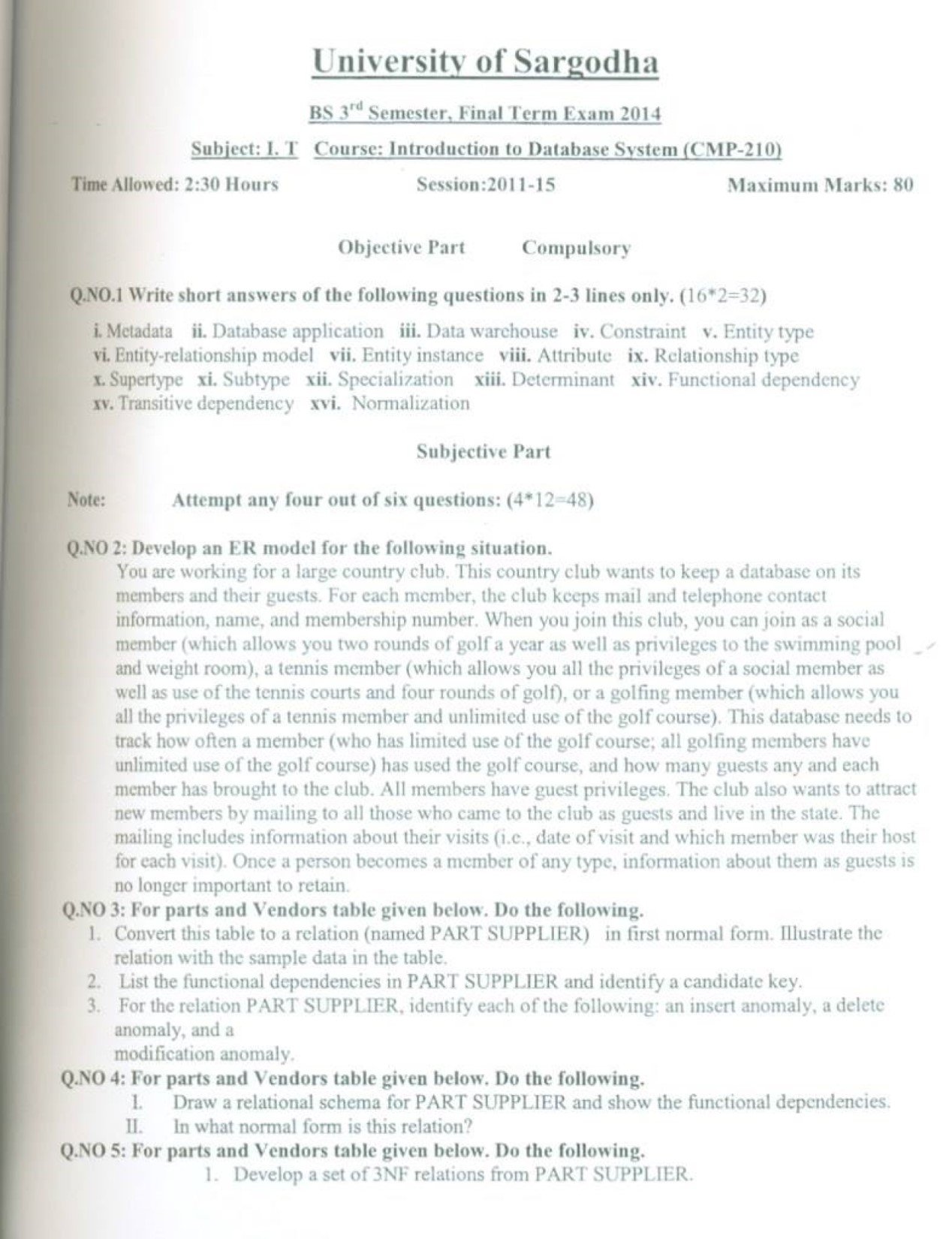Introduction to Database System BSIT 3rd Term Past Paper 2014 UOS

University of Sargodha
BS 3rd Semester, Final Term Exam 2014
Subject: I.T
Course: Introduction to Database System (CMP-210)
Time Allowed: 2:30 Hours
Session: 2011-15
Maximum Marks: 80
Objective Part
Compulsory
Q.NO.1 Write short answers of the following questions in 2-3 lines only. (16*2=32)
i. Metadata
ii. Database application
iii. Data warehouse
iv. Constraint
v. Entity type
vi. Entity-relationship model
vii. Entity instance
viii. Attribute
ix. Relationship type
x. Supertype
xi. Subtype
xii. Specialization
xiii. Determinant
xiv. Functional dependency
xv. Transitive dependency
xvi. Normalization
Subjective Part
Note: Attempt any four out of six questions: (4*12=48)
Q.NO 2: Develop an ER model for the following situation.
You are working for a large country club. This country club wants to keep a database on its members and their guests. For each member, the club keeps mail and telephone contact information, name, and membership number. When you join this club, you can join as a social member (which allows you two rounds of golf a year as well as privileges to the swimming pool and weight room), a tennis member (which allows you all the privileges of a social member as well as use of the tennis courts and four rounds of golf), or a golfing member (which allows you all the privileges of a tennis member and unlimited use of the golf course); this database needs to track how often a member (who has limited use of the golf course; all golfing members have unlimited use of the golf course) has used the golf course, and how many guests any and each member has brought to the club. All members have guest privileges. The club also wants to attract new members by mailing to all those who came to the club as guests and live in the state. The membership includes information about their visits (i.e., date of visit and which member was the host for each visit). Once a person becomes a member of any type, information about them as guests is no longer important to retain.
Q.NO 3: For parts and Vendors table given below. Do the following.
- Convert this table to a relation (named PART SUPPLIER) in first normal form. Illustrate the relation with the sample data in the table.
- List the functional dependencies in PART SUPPLIER and identify a candidate key.
- For the relation PART SUPPLIER, identify each of the following: an insert anomaly, a delete anomaly, and a modification anomaly.
Q.NO 4: For parts and Vendors table given below. Do the following.
I. Draw a relational schema for PART SUPPLIER and show the functional dependencies.
II. In what normal form is this relation?
Q.NO 5: For parts and Vendors table given below. Do the following.
- Develop a set of 3NF relations from PART SUPPLIER.
